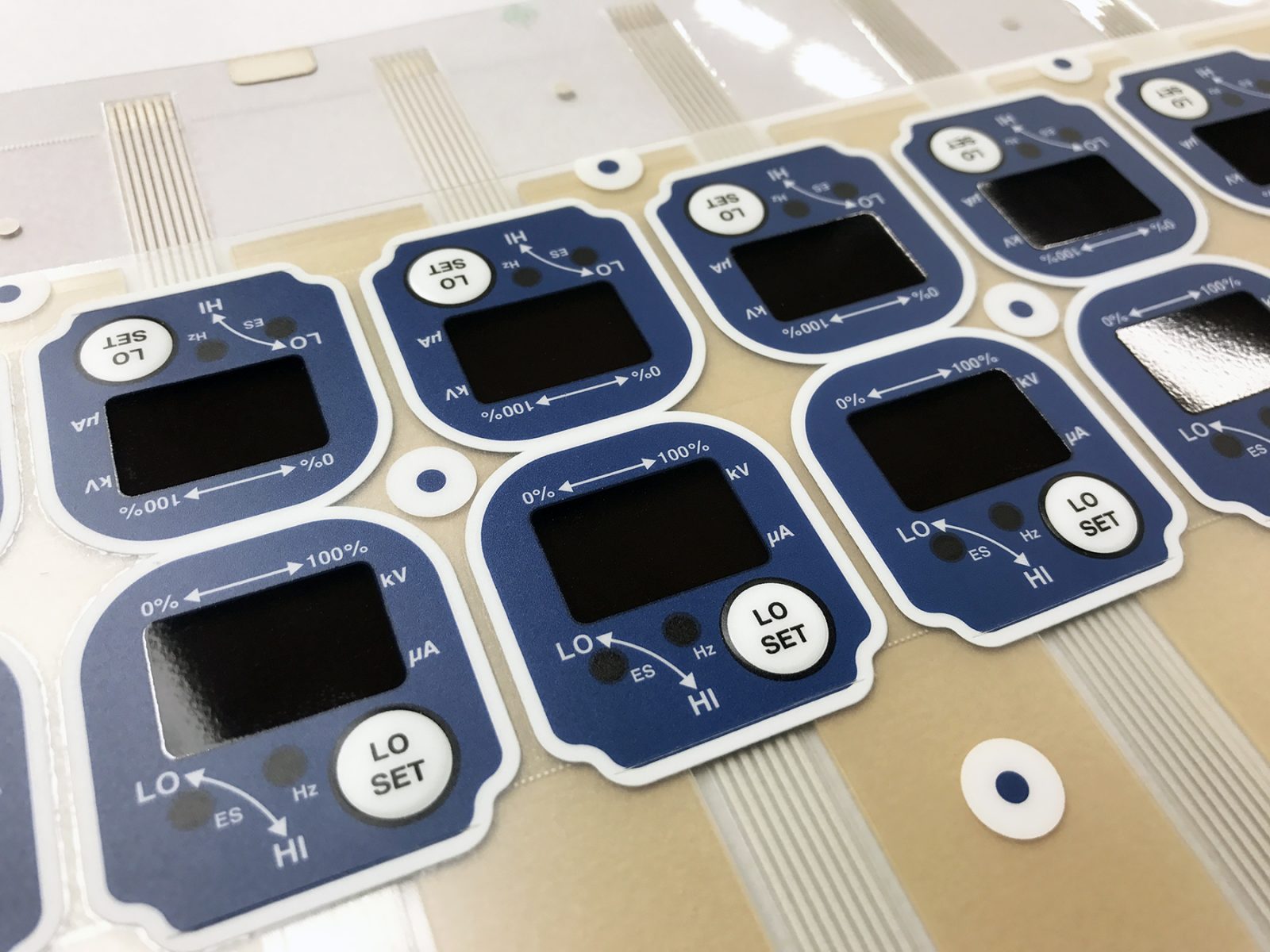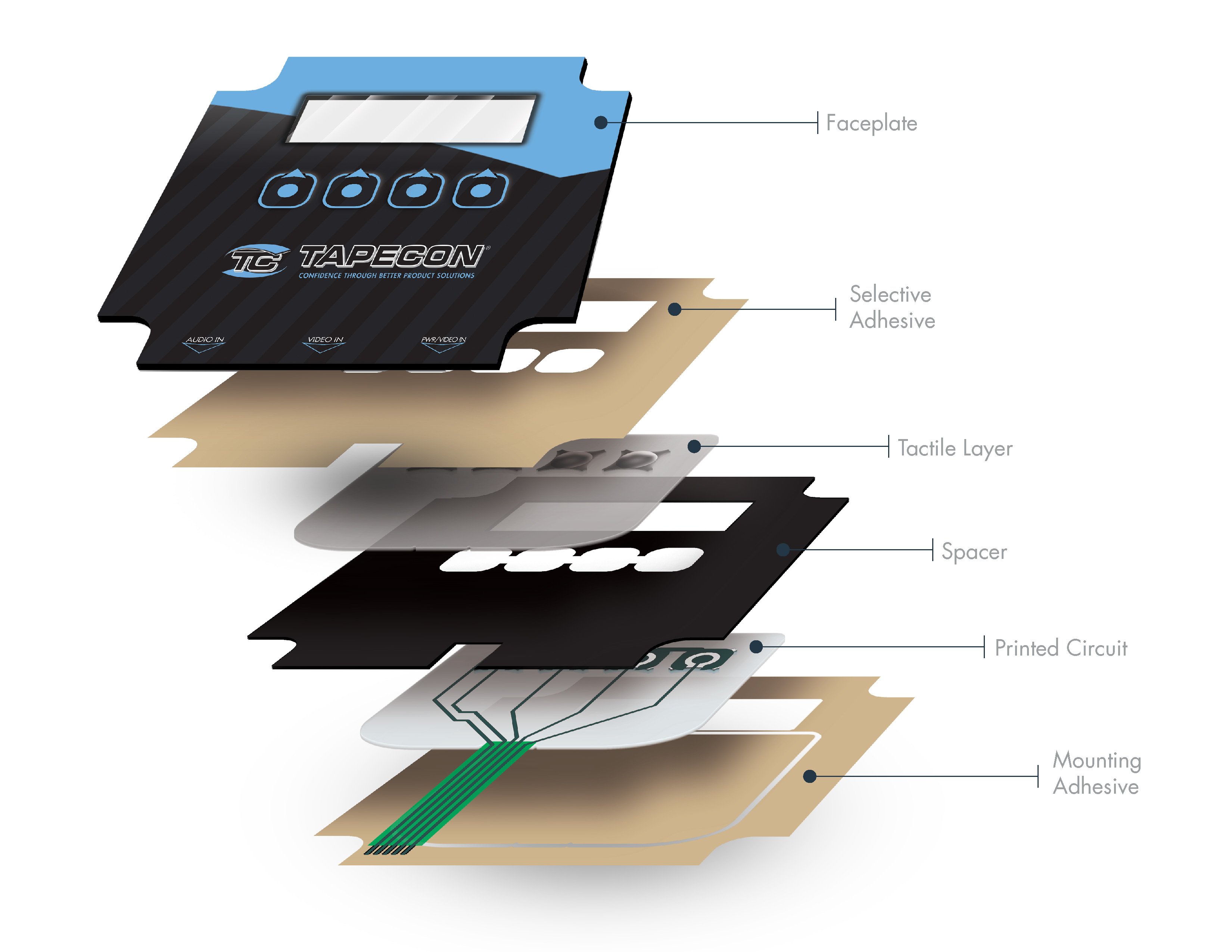How a Membrane Switch Improves User Experience and Tool Performance
How a Membrane Switch Improves User Experience and Tool Performance
Blog Article
Recognizing the Capability of Membrane Layer Switches Over for Customer User Interface Gadget
The performance of membrane switches over stands for a significant advancement in individual interface layout, integrating performance with visual versatility. As markets significantly focus on user experience, comprehending the subtleties of membrane switch innovation comes to be important.
What Are Membrane Layer Buttons?
Membrane layer buttons are innovative interface devices that help with individual communication with digital tools. These functional components consist of multiple layers, including a graphic overlay, spacer, and a printed circuit layer. The design permits a seamless integration into various electronic tools, enhancing both the aesthetic and useful facets of interface.
Membrane layer buttons are generally used in a vast range of applications, from home home appliances to commercial machinery and clinical tools. Their building and construction typically features a slim account, making them an excellent selection for portable layouts. The responsive comments supplied by these switches can be engineered to fulfill details customer choices, guaranteeing effective interaction in between the individual and the gadget.
Sturdiness is one more substantial benefit of membrane layer buttons, as they are resistant to dirt, dampness, and chemicals, which improves their life-span popular settings. Furthermore, these switches can be tailored in terms of shape, dimension, and graphic design, permitting branding and user-specific attributes. Generally, membrane switches represent a practical solution for improving individual experience in electronic tools, incorporating performance with aesthetic appeal in an efficient way.
Just How Membrane Switches Job
Operating on a straightforward concept, membrane switches over make use of a layered construction to register customer input efficiently. Each button includes numerous layers, including a published circuit layer, a spacer layer, and a leading graphic layer, which are created to interact flawlessly. When a user presses the leading layer, it presses the spacer layer, bringing the conductive elements of the circuit layer right into call with each other.
This get in touch with develops a closed circuit, indicating the tool to execute a certain feature. The style enables various setups, consisting of tactile responses, which can enhance the individual experience by providing a physical feeling upon activation. The products utilized in membrane layer switches usually consist of flexible substratums, such as polyester or polycarbonate, which ensure durability and strength against wear and tear.

Key Advantages of Membrane Layer Switches

Another considerable advantage is their density. Membrane layer switches are thin and light-weight, which enables suppliers to conserve room in their tools without compromising functionality. This function is particularly helpful in applications where weight and quantity are important considerations.
Additionally, membrane layer buttons are resistant to dirt, wetness, and chemicals, boosting their toughness. This durability expands their life expectancy and lowers the requirement for constant replacements, leading to cost savings over time.
In addition, the tactile comments given by membrane buttons can be maximized to enhance customer interaction. They can include attributes like this such as increased switches or distinct clicks, enhancing use and customer experience.
Applications Throughout Industries
Individual user interface gadgets utilizing membrane buttons are prevalent in a broad selection of industries, showcasing their adaptability and performance. Membrane Switch. In the medical sector, membrane buttons are integral to devices such as diagnostic devices and person surveillance systems, where their longevity and ease of cleaning are important for keeping health criteria. Similarly, in the automotive industry, these switches are utilized in dashboard controls and infotainment systems, supplying a smooth and contemporary user interface for customers.
Furthermore, the consumer electronics industry take advantage of membrane buttons in devices and portable devices, where compact layout and easy to use interfaces boost individual experience. Industrial applications also utilize membrane layer changes for control panels in equipment and automation systems, stressing their effectiveness and resistance to rough atmospheres.
In the aerospace and defense industries, membrane layer buttons are used in cabin controls and devices, where integrity and performance under severe problems are critical. Additionally, the pc gaming sector progressively incorporates membrane layer switches in controllers and arcade machines, adding to an appealing user experience. On the whole, the convenience of membrane switches allows their widespread usage across numerous markets, highlighting their value in contemporary interface layout.
Future Trends in Membrane Layer Change Technology

Additionally, the use of innovative materials, such as polycarbonate and polyester films, is expected to climb, providing improved resilience and resistance to ecological stress factors. These materials add to the total Membrane Switch longevity of membrane buttons, making them ideal for harsher industrial applications.
In addition, the consolidation of wise modern technology, consisting of IoT connectivity, will allow membrane layer buttons to communicate with various other devices and systems, promoting a more interactive customer experience. This trend aligns with the growing need for wise tools across Visit Your URL various industries, from medical care to customer electronics.
Last but not least, customization options are expected to broaden, permitting producers to develop bespoke remedies tailored to specific individual demands and choices. These developments will position membrane switches as vital elements in the advancement of interface modern technology.
Verdict
In final thought, membrane layer switches stand for a critical development in individual interface technology, offering a reputable and functional service for varied digital applications. As advancements in product scientific research and touch picking up innovations continue, the performance and applicability of membrane switches are anticipated to broaden, enhancing their significance in modern-day digital devices.
Report this page